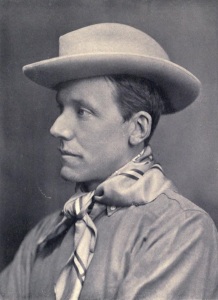29th September 1914
According to the Dorsets’ diary, the German shelling continued again at 9am until “our guns firing, it died away”. High explosive shells bothered the village occasionally. Gleichen confirms this with:
In this the two howitzer batteries, especially Wilson’s 61st, were splendid, and spotted and knocked out gun after gun of the enemy. He had an observing station halfway up the hill above Ste Marguerite, to which I went occasionally, with a grand view up to Vregny and Chivres; but even here, although the O.P. was beautifully concealed, one had to be careful not to show a finger or a cap, for the German snipers in the wood below were excellent shots, and there were some narrow escapes.
Sniping was causing many casualties all along the line. The Germans were hidden in amongst the trees shrouding the base of the Chivre spur. This gave them excellent cover from which to pick off careless enemy troops. It even allowed them to target British snipers with ruthless efficiency. Gleichen writes that on the 27th “a Bedford sniper, an excellent shot, one Sergeant Hunt, unfortunately got a bullet through two fingers of his right hand.”
The Germans entered the war with excellent equipment and great skills as hunters and marksmen. Their general purpose rifle was the 7.92 mm Mauser Gewehr 98. It was an excellent weapon, accurate, reliable and efficient, let down only by its slower rate of fire and small magazine. It could also take a fitted telescopic scope out of the box. While the British Army prided itself upon its soldiers’ rate of fire, the German Army fixated on accuracy, and if an optical sight helped them then all the better.
It’s often claimed that the British thought that aiming aids were somehow dishonourable or unfair. The mounting casualties were often pooh-poohed as flukes. In his article “The British ‘School Of Sniping’ On The Western Front“, Dr David Payne states that the ” ‘unaccountable’ British firearm victims that did occur were usually put down to ‘lucky shots’ or ‘stray bullets’.” I’m not sure about this claim. Firstly he doesn’t cite his primary sources, and secondly, the diaries and letters home at the time are full of the word sniper. The British Army certainly knew that the enemy were deliberately targeting them.
The Germans had both equipment and techniques that helped them establish total superiority over the British when it came to sniping. They would often hunt in pairs, with a spotter using high powered glasses calling out targets to a marksman wearing camouflage, shooting from behind a sniping plate, a steel loophole thick enough to withstand a British .303 rifle round.
The British troops became so paranoid about snipers in late 1914 (and especially in early 1915), that they were often paralysed even by the very thought that one was operating in their section. The phrase “putting the wind up” was used a lot to describe this feeling of panic. They had no way of responding to this constant and deadly threat. At least not yet.
The British may have left the field in South Africa victorious but they were very much beaten in musketry by the Mauser-wielding Boers. As a result the search was made for a new rifle with a higher rate of velocity and range. Sadly the outbreak of war ended that search competition and although the replacement Short Magazine Lee-Enfield Mark III (SMLE or “Smelly” ) was an excellent infantry rifle, it was not a rifle suited to sniping. The main problem with it was the fact that its bolt action meant that most optical sights made for it were mounted to the left of the barrel.
The other problem was that Britain’s optical glass was far inferior to German manufactured optics. By the end of 1914 the Germans had about 20,000 optical sights in action. The British had just over 2000. And many of those just didn’t work, They were not calibrated properly and were often supplied without fitting instructions. As a result some hunting-mad officers brought their personal rifles and sights to the frontline.
It was Major Hesketh Vernon Hesketh-Prichard who transformed all this by identifying the problems with the sights and, more importantly, British sniping methods. He recalls, in his beautifully illustrated book (and rather sardonically titled) “Sniping in France“.
For the benefit of the untechnical reader it will be well here to remark that if a telescopic sight set upon a 4-inch base is one-hundredth of an inch out of its true alignment, it will shoot incorrectly to the extent of 9 inches at 100 yards, and, of course, 18 inches at 200 yards, and 54 inches at 600 yards. The sights had been issued without instruction, were often handed over as trench-stores, and were served out by quartermaster-sergeants who very often looked on them as egregious fads.

Hesketh-Prichard also noted that, in many cases, using open sights (the metal guides along the gun barrel) was often more accurate than using existing optical sights. He used this argument to change British views on sniping and help establish a “school” of scouting and sniping. He certainly saved many lives in doing so.
We’ll meet “Hex” again further along in this series. He’s worth an entire post, if we go by the title of his biography alone: Hesketh Prichard D.S.O., M.C.: Explorer, Naturalist, Cricketer, Author, Soldier.
2 thoughts to “Meet Mister Sniper”